Various Works Read online
Page 65
is added to cold or cold to hot so as to mix, the result is that the
embryo itself arising from these is preserved and thus these animals
are fertile when crossed with one another, but the animal produced
by them is no longer fertile but unable to produce perfect offspring.
And in general each of these animals naturally tends towards
sterility. The ass has all the disadvantages already mentioned, and if
it should not begin to generate after the first shedding of teeth,
it no longer generates at all; so near is the constitution of the
ass to being sterile. The horse is much the same; it tends naturally
towards sterility, and to make it entirely so it is only necessary
that its generative secretion should become colder; now this is what
happens to it when mixed with the corresponding secretion of the
ass. The ass in like manner comes very near generating a sterile
animal when mated with its own species. Thus when the difficulty of
a cross contrary to nature is added, (when too even in the other case
when united with their own species they with difficulty produce a
single young one), the result of the cross, being still more
sterile and contrary to nature, will need nothing further to make it
sterile, but will be so of necessity.
We find also that the bodies of female mules grow large because
the matter which is secreted in other animals to form the catamenia is
diverted to growth. But since the period of gestation in such
animals is a year, the mule must not only conceive, if she is to be
fertile, but must also nourish the embryo till birth, and this is
impossible if there are no catamenia. But there are none in the
mule; the useless part of the nutriment is discharged with the
excretion from the bladder- this is why male mules do not smell to the
pudenda of the females, as do the other solid-hoofed ungulates, but
only to the evacuation itself- and the rest of the nutriment is used
up to increase the size of the body. Hence it is sometimes possible
for the female to conceive, as has been known to happen before now,
but it is impossible for her to complete the process of nourishing the
embryo and bringing it to birth.
The male, again, may sometimes generate, both because the male sex
is naturally hotter than the female and because it does not contribute
any material substance to the mixture. The result in such cases is a
'ginnus', that is to say, a dwarf mule; for 'ginni' are produced
also from the crossing of horse and ass when the embryo is diseased in
the uterus. The ginnus is in fact like the so-called 'metachoera' in
swine, for a 'metachoerum' also is a pig injured in the uterus; this
may happen to any pig. The origin of human dwarfs is similar, for
these also have their parts and their whole development injured during
gestation, and resemble ginni and metachoera.
Book III
1
WE have now spoken about the sterility of mules, and about those
animals which are viviparous both externally and within themselves.
The generation of the oviparous sanguinea is to a certain extent
similar to that of the animals that walk, and all may be embraced in
the same general statement; but in other respects there are
differences in them both as compared with each other and with those
that walk. All alike are generated from sexual union, the male
emitting semen into the female. But among the ovipara (1) birds
produce a perfect hard-shelled egg, unless it be injured by disease,
and the eggs of birds are all two-coloured. (2) The cartilaginous
fishes, as has been often said already, are oviparous internally but
produce the young alive, the egg changing previously from one part
of the uterus to another; and their egg is soft-shelled and of one
colour. One of this class alone does not produce the young from the
egg within itself, the so-called 'frog'; the reason of which must be
stated later. (3) All other oviparous fishes produce an egg of one
colour, but this is imperfect, for its growth is completed outside the
mother's body by the same cause as are those eggs which are
perfected within.
Concerning the uterus of these classes of animals, what
differences there are among them and for what reasons, has been stated
previously. For in some of the viviparous creatures it is high up near
the hypozoma, in others low down by the pudenda; the former in the
cartilaginous fishes, the latter in animals both internally and
externally viviparous, such as man and horse and the rest; in the
ovipara it is sometimes low, as in the oviparous fish, and sometimes
high, as in birds.
Some embryos are formed in birds spontaneously, which are called
wind-eggs and 'zephyria' by some; these occur in birds which are not
given to flight nor rapine but which produce many young, for these
birds have much residual matter, whereas in the birds of prey all such
secretion is diverted to the wings and wing-feathers, while the body
is small and dry and hot. (The secretion corresponding in hen-birds
to catamenia, and the semen of the cock, are residues.) Since then
both the wings and the semen are made from residual matter, nature
cannot afford to spend much upon both. And for this same reason the
birds of prey are neither given to treading much nor to laying many
eggs, as are the heavy birds and those flying birds whose bodies are
bulky, as the pigeon and so forth. For such residual matter is
secreted largely in the heavy birds not given to flying, such as
fowls, partridges, and so on, wherefore their males tread often and
their females produce much material. Of such birds some lay many
eggs at a time and some lay often; for instance, the fowl, the
partridge, and the Libyan ostrich lay many eggs, while the pigeon
family do not lay many but lay often. For these are between the
birds of prey and the heavy ones; they are flyers like the former, but
have bulky bodies like the latter; hence, because they are flyers
and the residue is diverted that. way, they lay few eggs, but they lay
often because of their having bulky bodies and their stomachs being
hot and very active in concoction, and because moreover they can
easily procure their food, whereas the birds of prey do so with
difficulty.
Small birds also tread often and are very fertile, as are
sometimes small plants, for what causes bodily growth in others turn
in them to a seminal residuum. Hence the Adrianic fowls lay most eggs,
for because of the smallness of their bodies the nutriment is used
up in producing young. And other birds are more fertile than
game-fowl, for their bodies are more fluid and bulkier, whereas
those of game-fowl are leaner and drier, since a passionate spirit
is found rather in such bodies as the latter. Moreover the thinness
and weakness of the legs contribute to making the former class of
birds naturally inclined to tread and to be fertile, as we find also
in the human species; for the nourishment which otherwise goes to
the legs is turned in such into a seminal secretion, what Nature takes
contrary, have a strong walk and their legs are thick owing to their
habits, so that for all these reasons they neither tread nor lay much.
The kestrel is the most fertile; for this is nearly the only bird of
prey which drinks, and its moisture, both innate and acquired, along
with its heat is favourable to generative products. Even this bird
does not lay very many eggs, but four at the outside.
The cuckoo, though not a bird of prey, lays few eggs, because it
is of a cold nature, as is shown by the cowardice of the bird, whereas
a generative animal should be hot and moist. That it is cowardly is
plain, for it is pursued by all the birds and lays eggs in the nests
of others.
The pigeon family are in the habit of laying two for the most
part, for they neither lay one (no bird does except the cuckoo, and
even that sometimes lays two) nor yet many, but they frequently
produce two, or three at the most generally two, for this number
lies between one and many.
It is plain from the facts that with the birds that lay many eggs
the nutriment is diverted to the semen. For most trees, if they bear
too much fruit, wither away after the crop when nutriment is not
reserved for themselves, and this seems to be what happens to annuals,
as leguminous plants, corn, and the like. For they consume all their
nutriment to make seed, their kind being prolific. And some fowls
after laying too much, so as even to lay two eggs in a day, have
died after this. For both the birds the plants become exhausted, and
this condition is an excess of secretion of residual matter. A similar
condition is the cause of the later sterility of the lioness, for at
the first birth she produces five or six, then in the next year
four, and again three cubs, then the next number down to one, then
none at all, showing that the residue is being used up and the
generative secretion is failing along with the advance of years.
We have now stated in which birds wind-eggs are found, and also what
sort of birds lay many eggs or few, and for what reasons. And
wind-eggs, as said before, come into being because while it is the
material for generation that exists in the female of all animals,
birds have no discharge of catamenia like viviparous sanguinea (for
they occur in all these latter, more in some, less in others, and in
some only enough in quantity just to mark the class). The same
applies to fish as to birds, and so in them as in birds is found an
embryonic formation without impregnation, but it is less obvious
because their nature is colder. The secretion corresponding to the
catamenia of vivipara is formed in birds at the appropriate season for
the discharge of superfluous matter, and, because the region near
the hypozoma is hot, it is perfected so far as size is concerned,
but in birds and fishes alike it is imperfect for generation without
the seminal fluid of the male; the cause of this has been previously
given. Wind-eggs are not formed in the flying birds, for the same
reason as prevents their laying many eggs; for the residual matter
in birds of prey is small, and they need the male to give an impulse
for the discharge of it. The wind-eggs are produced in greater numbers
than the impregnated but smaller in size for one and the same
reason; they are smaller in size because they are imperfect, and
because they are smaller in size they are more in number. They are
less pleasant for food because they are less concocted, for in all
foods the concocted is more agreeable. It has been sufficiently
observed, then, that neither birds' nor fishes' eggs are perfected for
generation without the males. As for embryos being formed in fish also
(though in a less degree) without the males, the fact has been
observed especially in river fish, for some are seen to have eggs from
the first, as has been written in the Enquiries concerning them. And
generally speaking in the case of birds even the impregnated eggs
are not wont for the most part to attain their full growth unless
the hen be trodden continually. The reason of this is that just as
with women intercourse with men draws down the secretion of the
catamenia (for the uterus being heated attracts the moisture and
the passages are opened), so this happens also with birds; the
residual matter corresponding to the catamenia advances a little at
a time, and is not discharged externally, because its amount is
small and the uterus is high up by the hypozoma, but trickles together
into the uterus itself. For as the embryo of the vivipara grows by
means of the umbilical cord, so the egg grows through this matter
flowing to it through the uterus. For when once the hens have been
trodden, they all continue to have eggs almost without intermission,
though very small ones. Hence some are wont to speak of wind-eggs as
not coming into being independently but as mere relics from a previous
impregnation. But this is a false view, for sufficient observations
have been made of their arising without impregnation in chickens and
goslings. Also the female partridges which are taken out to act as
decoys, whether they have ever been impregnated or not, immediately on
smelling the male and hearing his call, become filled with eggs in the
latter case and lay them in the former. The reason why this happens is
the same as in men and quadrupeds, for if their bodies chance to be in
rut they emit semen at the mere sight of the female or at a slight
touch. And such birds are of a lascivious and fertile nature, so
that the impulse they need is but small when they are in this
excited condition, and the secreting activity takes place quickly in
them, wind-eggs forming in the unimpregnated and the eggs in those
which have been impregnated growing and reaching perfection swiftly.
Among creatures that lay eggs externally birds produce their egg
perfect, fish imperfect, but the eggs of the latter complete their
growth outside as has been said before. The reason is that the fish
kind is very fertile; now it is impossible for many eggs to reach
completion within the mother and therefore they lay them outside. They
are quickly discharged, for the uterus of externally oviparous
fishes is near the generative passage. While the eggs of birds are
two-coloured, those of all fish are one-coloured. The cause of the
double colour may be seen from considering the power of each of the
two parts, the white and the yolk. For the matter of the egg is
secreted from the blood [No bloodless animal lays eggs,] and that
the blood is the material of the body has been often said already. The
one part, then, of the egg is nearer the form of the animal coming
into being, that is the hot part; the more earthy part gives the
substance of the body and is further removed. Hence in all
two-coloured eggs the animal receives the first principle of
generation from the white (for the vital principle is in that which
is hot), but the nutriment from the yolk. Now in animals o
f a
hotter nature the part from which the first principle arises is
separated off from the part from which comes the nutriment, the one
being white and the other yellow, and the white and pure is always
more than the yellow and earthy; but in the moister and less hot the
yolk is more in quantity and more fluid. This is what we find in
lake birds, for they are of a moister nature and are colder than the
land birds, so that the so-called 'lecithus' or yolk in the eggs of
such birds is large and less yellow because the white is less
separated off from it. But when we come to the ovipara which are
both of a cold nature and also moister (such is the fish kind) we
find the white not separated at all because of the small size of the
eggs and the quantity of the cold and earthy matter; therefore all
fish eggs are of one colour, and white compared with yellow, yellow
compared with white. Even the wind-eggs of birds have this distinction
of colour, for they contain that out of which will come each of the
two parts, alike that whence arises the principle of life and that
whence comes the nutriment; only both these are imperfect and need the
influence of the male in addition; for wind-eggs become fertile if
impregnated by the male within a certain period. The difference in
colour, however, is not due to any difference of sex, as if the
white came from the male, the yolk from the female; both on the
contrary come from the female, but the one is cold, the other hot.
In all cases then where the hot part is considerable it is separated
off, but where it is little it cannot be so; hence the eggs of such
animals, as has been said, are of one colour. The semen of the male
only puts them into form; and therefore at first the egg in birds
appears white and small, but as it advances it is all yellow as more
of the sanguineous material is continually mixed with it; finally as
the hot part is separated the white takes up a position all round it
and equally distributed on all sides, as when a liquid boils; for
the white is naturally liquid and contains in itself the vital heat;
therefore it is separated off all round, but the yellow and earthy

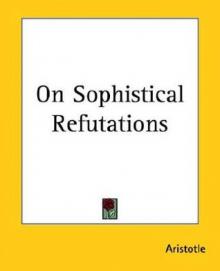 On Sophistical Refutations
On Sophistical Refutations The Categories
The Categories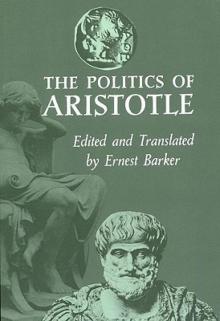 The Politics of Aristotle
The Politics of Aristotle Nicomachean Ethics
Nicomachean Ethics The Rhetoric & the Poetics of Aristotle
The Rhetoric & the Poetics of Aristotle POSTERIOR ANALYTICS
POSTERIOR ANALYTICS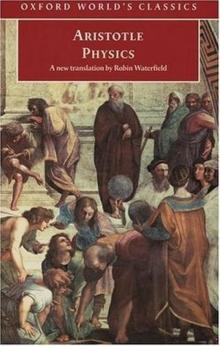 Physics
Physics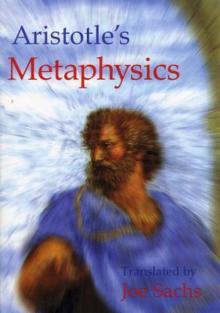 Metaphysics
Metaphysics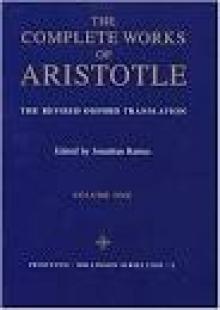 Various Works
Various Works